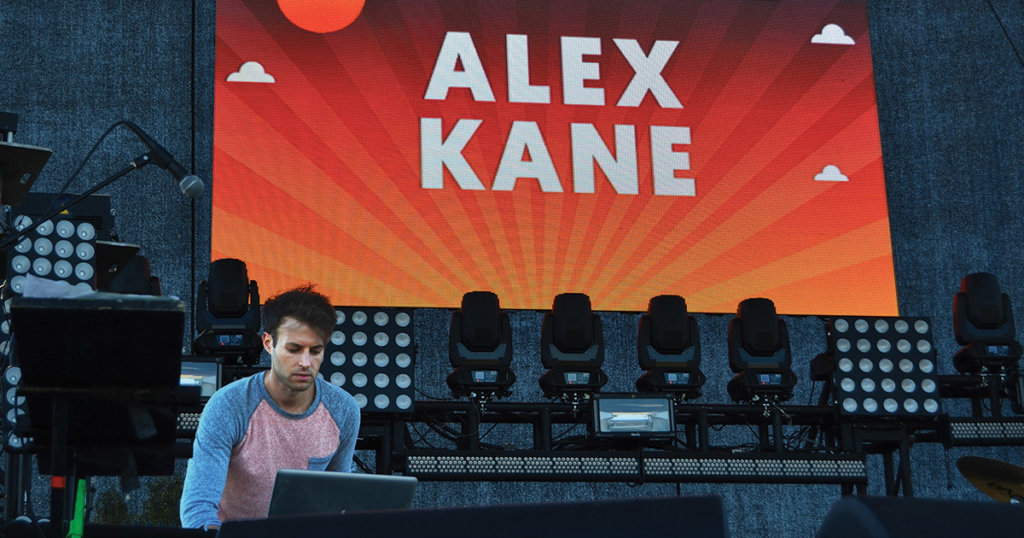MONO fans and users span across a broad spectrum, from hobbyist and creators to the professional touring artist. We’ve had the privilege of speaking to many all over the world.
But it’s not often we come across a creator like Alex Kane. He calls himself a musician first and foremost, and then an artist and a designer. The design part puts him as somewhat of a mad scientist – he’s designed, built, and conceptualized some crazy guitars and projects outside of music.
Starting out on the drums at age 8, then the guitar as a teenager, Alex has since broadened his focus – fretted instruments, Binaural Beats and Spatial Audio fall along one path of his design practice, technology and philosophy comprise the other. As an artist, Alex has performed up and down the Pacific coast of Asia, DJing at clubs and festivals from Singapore to the Great Wall of China.
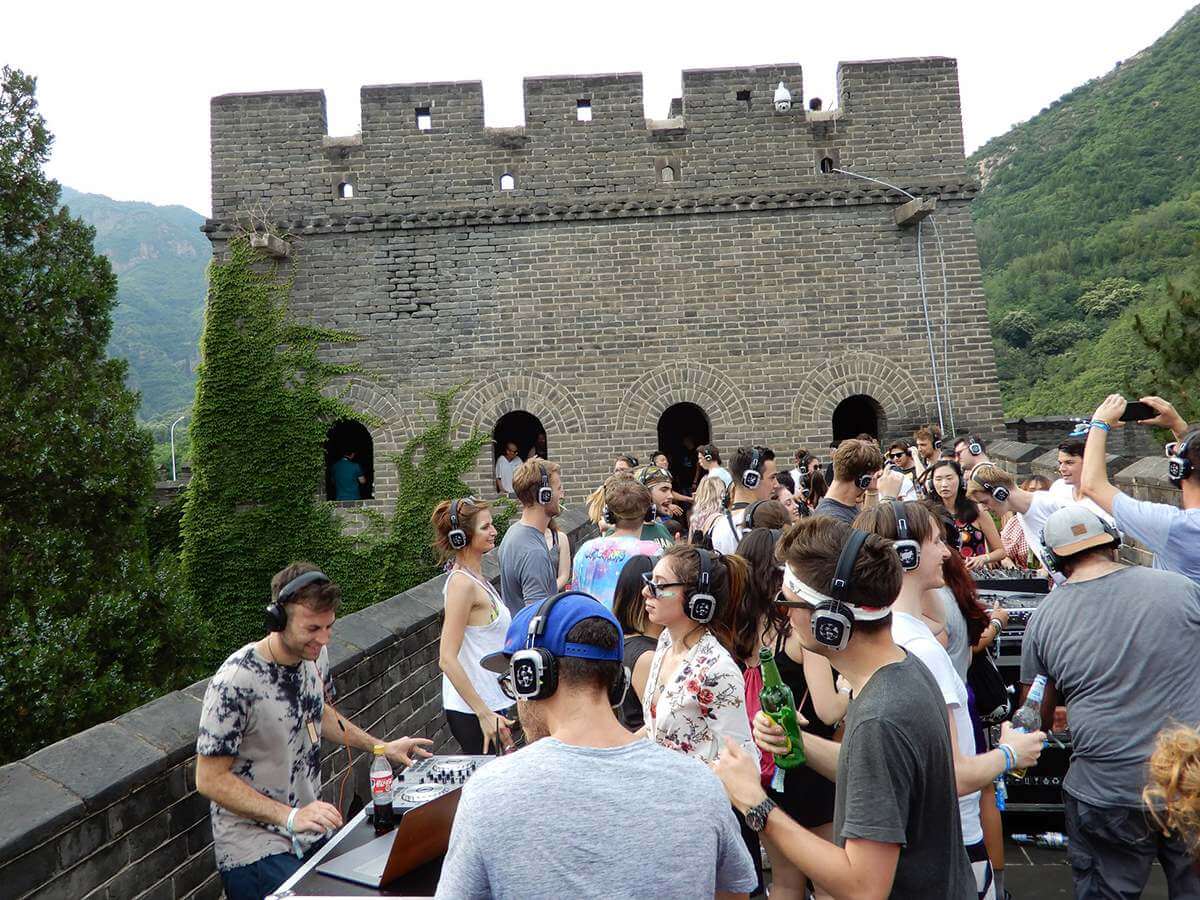
He’s just released his latest EP and ahead of that, we speak about his guitar building endeavors, explore his outlandish creations and his musical beginnings.
Tell us a bit about yourself.
My name is Alex, I’ve been playing music since I was eight, started playing guitar when I was 14 and learned to use DAWs later that year (my first one was actually Cakewalk). I then transitioned over to Protools and then to Ableton. My style of production is instrumental and electronic, so Ableton was a better fit. I started making music when I was in high school and recorded an album with a band – it was not good, neither musically nor production-wise – but it was an opportunity to learn.
In college, I had a group of friends who were skiers and they suggested that my music would be perfect for ski movies. So I sent a CD to a ski movie production company and they used two of my tracks. That movie won a Best Soundtrack Award at the International Freeski Film Festival that year and since then I’ve gone on to license my music to GoPro, NBC and ESPN and other action sports films.
Tell us about building your own guitar.
Throughout college, I kept missing out on an 8 person class called “String instrument construction”. You learned to build an acoustic guitar. I finally managed to get into the class during my last semester. I absolutely loved it. It was the first project which I got real hands-on, dirty in a woodshop.

After I graduated, I wanted to do another one. I always wanted a twelve-string and a hollow body so I envisioned my next guitar to combine those two. Aesthetically, I wanted it to fall somewhere between a Paul Languedoc guitar (he makes Trey Anastasio’s guitars) and my PRS CE22. I enrolled in an independent study so I could have access to a woodshop. I designed it, built it from scratch and that was one of the most rewarding things I’ve ever done.
Fast forward nine years, after spending my early career marketing and branding for musicians, I decided to enroll in the California College of the Arts in industrial design. That’s when I developed my modified Pulse MIDI Stratocaster. I learned somewhat basic mechatronics like Arduino projects, moving motors with different sensors… I knew I wanted to incorporate this into a guitar design.
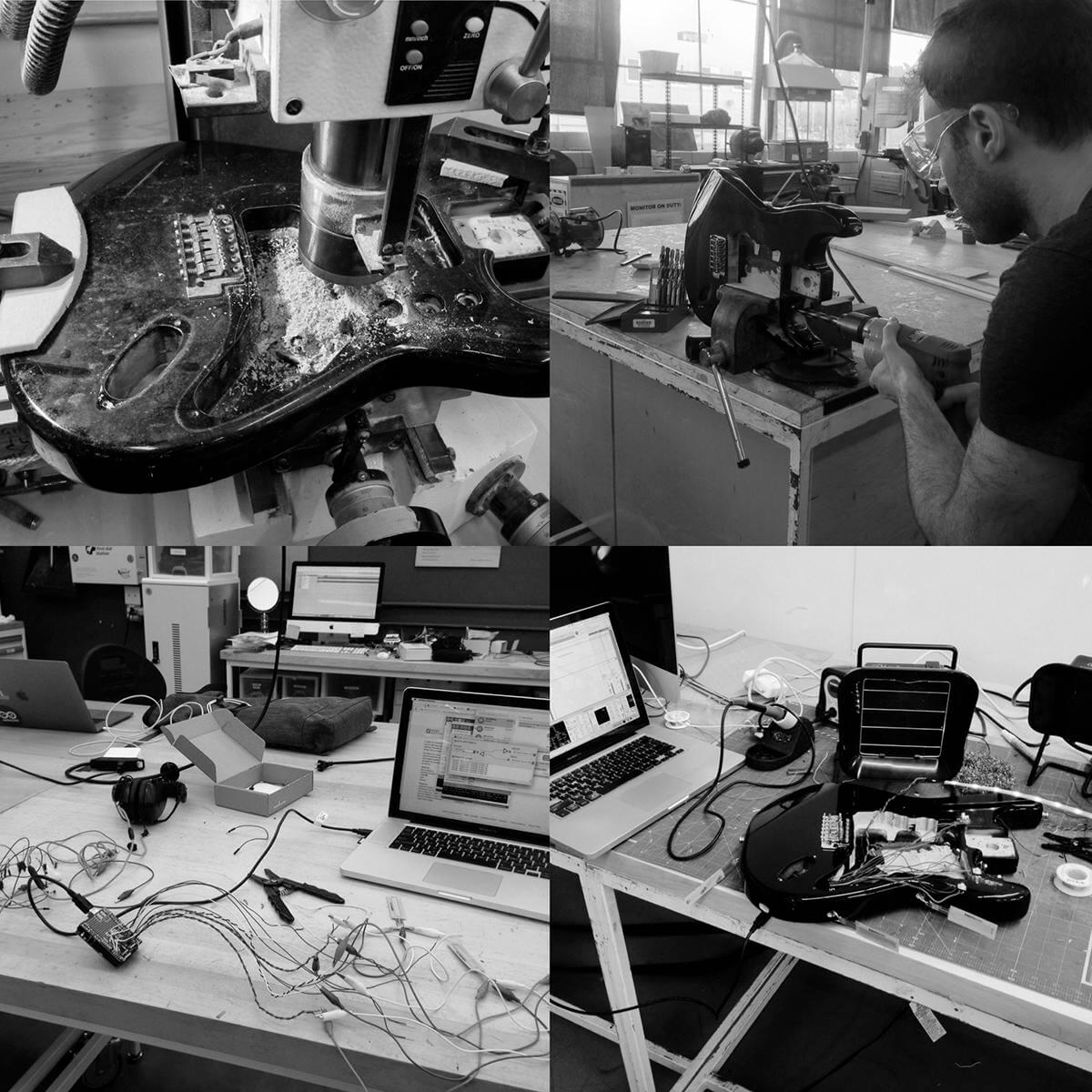
This Stratocaster was the first guitar you built with modified electronics, MIDI and NeoPixel LEDs and other crazy appointments. Can you tell us more about what it does and how it works?
Once I figured out the fundamentals of throwing together a project with an Arduino and the inputs and outputs of sensors, MIDI signals, or signals to a motor, at that level it’s all kind of the same thing – just remapping ins and outs. So once I understood that, it wasn’t that hard to conceptually apply it to the project.
There are a handful of buttons and sensors around the guitar. Three buttons on the top, and along the side there are three touch potentiometers. Three more buttons along the cutaway, and a rotary encoder which can also act as a button.
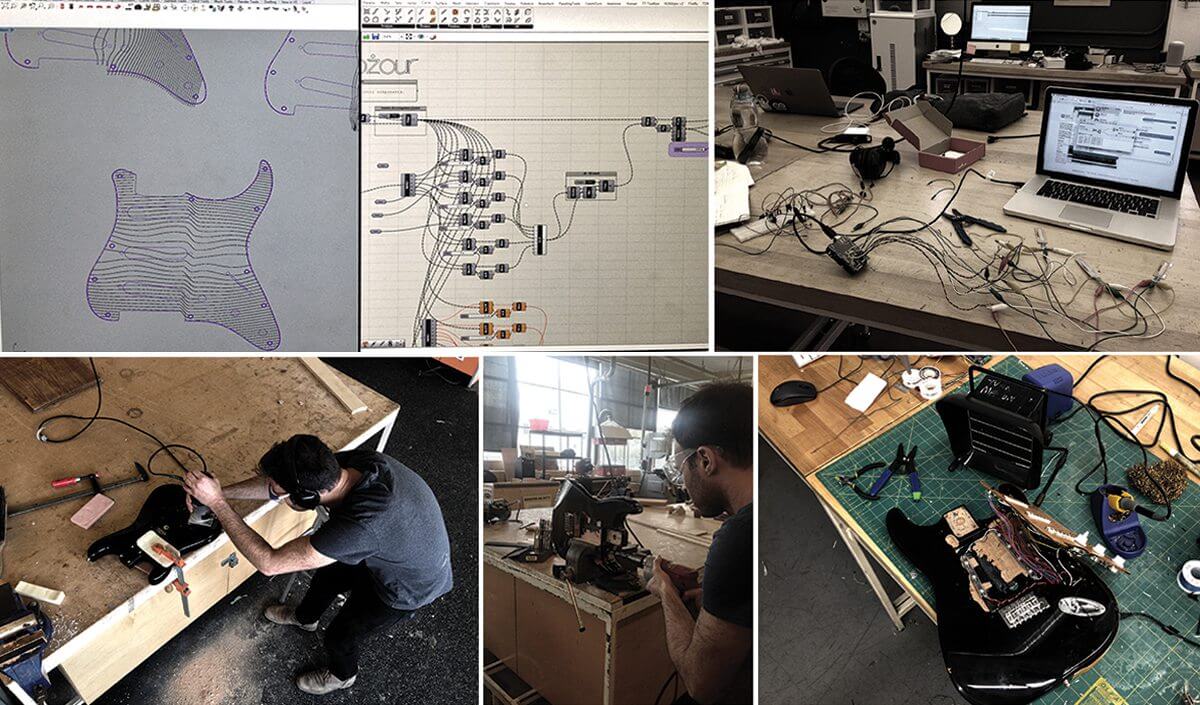
You can play it like a regular guitar, plugging into an amp or interface. But there is also a USB connection attached to an Arduino microprocessor inside the body of the guitar. If you press any of the buttons, you can map any of the buttons like you would on Ableton and put it into MIDI map mode. If you want to trigger a sample, you can do that. If you want to turn on a plugin, you can do that. The touch potentiometers along the side are like faders, which you map to whatever parameters you want. The rotary encoder is useful for different types of plugins.
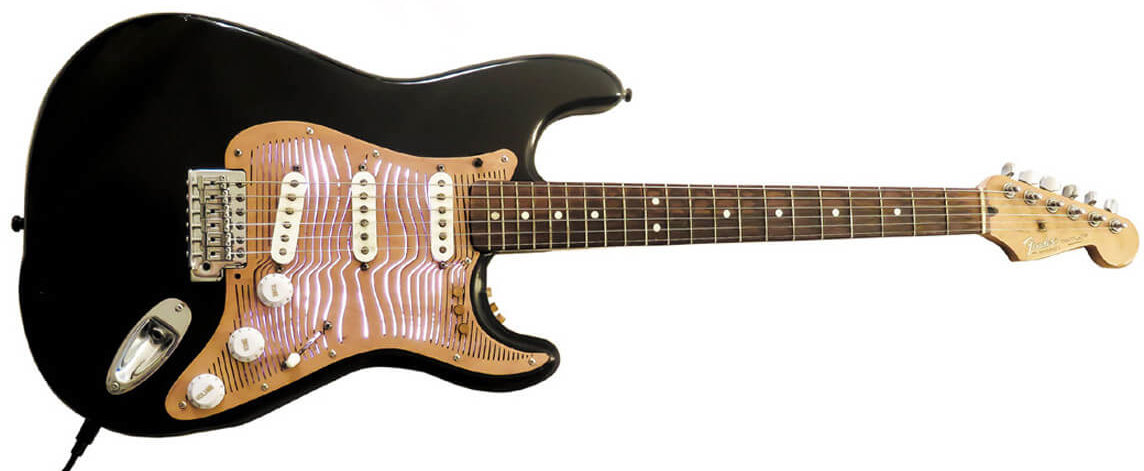
Underneath the laser cut pickguard are 12 NeoPixel LEDs. The LEDs light up, and right now, within the code is set to do this random pulsing of light, which makes it more visually engaging.
What inspired you to build this guitar?
I built this guitar to be a performance tool. There is a certain amount of experimentation that can influence writing, making loops, but in reality, I hadn’t found a configuration for playing live that I found ideal, so I designed it for that.
I was performing with a good friend of mine, Alex Hamady – an incredible drummer and musically one of the most talented people I’ve ever met. We made a lot of music together and we’d perform live where he’d play drums, and I play guitar and synths, while mixing in of our own tracks. I needed something that was more tailored to me. The goal was to create something that was visually engaging, interesting and brought the key controls of how I would be performing into a much more fluid interface.
What kind of music do you play on your modded controller guitar?
We put out an EP a few years ago called Anthropocene, which was premiered by a west coast-based electronic blog called The Untz. They gratuitously compared us to Nine Inch Nails (Alex and myself are huge fans of NIN). It was this industrial instrumental electronic mix and it jumps around quite a bit.
Our new EP, The Pineapple Plan, keeps some of the industrial qualities but then incorporates a pretty wide variety of influences. The first track is primarily Spanish guitar mixed with electronic, and on other tracks, there are elements of Chemical Brothers, Daft Punk, Gorillaz and Phish.
We understand you once had a brush with master builder fame. Can you tell us more about that?
I graduated in December 2008, a few weeks after the Great Recession hit. Even with a college degree and years of experience bartending and serving in restaurants, I couldn’t even get a job bussing tables. So I split my time job searching and designing/building my second guitar. After seven or eight months of menial jobs and dwindling money, I had to move home to my parents’ house Maryland.
After moving home one of the first things I did was to drive an hour south to the Paul Reed Smith guitar factory, with the 12-string guitar in hand. I walked into the lobby, went up to the receptionist and being 23 years old and unaware of the audacity, I asked if Mr. Smith was available. The receptionist replied with more than a little incredulity, “Paul… Reed Smith?” Unsurprisingly, she turned me down, telling me he’s in meetings all day.
I proceeded to stall for 10-15 minutes questioning the receptionist in the hopes that he would just walk through the lobby of his factory in the short window I was there. And then he did. I ran out of ways to stall and my hand was literally on the door to leave, I look back and he just walks right across the lobby. I ran back and yelled “Mr. Smith!”
He stopped, looked at me said hello saw the guitar on my back and asked what I got there. So I pulled out the guitar handed it over and then he asked if he could play with it.
I wanted a job. So after a back and forth about my qualifications and experience, Paul asked if I wanted a job sanding guitars. I had always wanted a job designing guitars, but I was pretty sure that wasn’t going to happen so I told Paul I’ll take any job he was willing to give me. Unfortunately, the company was on a hiring freeze – so my timing was right off.
With that, I drove back home, still jobless but with a pretty nice consolation prize: I met PRS himself.

